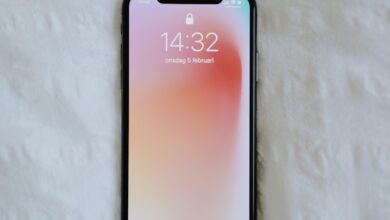The Role of Formatting in Samsung Phone Troubleshooting

Have you ever encountered issues with your Samsung phone that made you scratch your head in frustration? Well, worry not, because there’s a powerful troubleshooting technique that could come to your rescue – formatting. In this article, we’ll explore the role of formatting in troubleshooting Samsung phones and how it can often be the solution to various software-related problems.
Formatting, in simple terms, refers to wiping out all the data on your device and restoring it to its original factory settings. It’s like giving your phone a fresh start, erasing any glitches or conflicts that might be causing trouble. When faced with persistent issues such as freezing, app crashes, or sluggish performance, formatting can often resolve these problems by eliminating any corrupted files or conflicting software.
One common scenario where formatting can be beneficial is when you’re experiencing frequent app crashes. You know how frustrating it can be when an app suddenly closes down for no apparent reason. By formatting your Samsung phone, you can remove any underlying software conflicts that may have caused those crashes, allowing you to enjoy uninterrupted app usage once again.
Another area where formatting can work wonders is when your Samsung phone is running slow. Over time, our devices tend to accumulate temporary files, cache, and other clutter that can bog down their performance. By formatting your phone, you can wipe away all those unnecessary files and give your device a fresh breath of speed, making it run as smoothly as it did when you first got it.
However, before you rush into formatting your device, remember that it will erase all the data stored on your phone. So, it’s crucial to back up your important files, contacts, and photos before proceeding. Once you’ve safely backed up everything, you can proceed with the formatting process.
Formatting plays a vital role in troubleshooting Samsung phones. Whether you’re dealing with app crashes, sluggish performance, or other software-related issues, formatting can often be the solution that brings your device back to its optimal state. Just remember to back up your data before formatting to ensure you don’t lose any precious information. So, the next time you encounter persistent problems with your Samsung phone, consider giving it a fresh start through formatting.
Decoding the Importance of Formatting: How Samsung Phone Users Can Troubleshoot like Pros
Are you tired of encountering issues with your Samsung phone? Fret not, because in this article, we will delve into the importance of formatting and how it can empower Samsung phone users to troubleshoot like pros. Formatting plays a crucial role in optimizing the performance of your device while resolving various software-related glitches.
So, what exactly is formatting? In simple terms, it involves erasing all the data on your phone and restoring it to its original factory settings. Although it may sound daunting, formatting can be an effective solution to a myriad of problems. By wiping out unnecessary clutter, outdated files, and corrupted data, you can give your Samsung phone a fresh start.
One of the key benefits of formatting is improved speed and performance. Over time, as you install and uninstall applications, your phone accumulates fragments of data that can slow down its operation. By formatting your device, you remove these fragments, allowing it to function more efficiently. It’s akin to decluttering your workspace – a clean environment leads to enhanced productivity.
Formatting also comes in handy when you encounter persistent software issues. If your Samsung phone freezes, crashes, or exhibits unusual behavior, formatting can often resolve these problems. It eradicates any problematic software configurations or conflicts, providing a clean slate for your device to operate smoothly.
Moreover, formatting can be a lifesaver when dealing with stubborn malware or viruses. These malicious entities can wreak havoc on your phone, compromising security and causing system instability. By formatting your device, you eliminate these threats, ensuring a secure and stable environment for your personal data.
However, it’s important to note that formatting erases all the data on your phone. Therefore, it is crucial to back up your important files and media before proceeding with the process. This way, you can restore your data once the formatting is complete, sparing yourself from any potential loss or inconvenience.
Formatting is a powerful tool that Samsung phone users can utilize to troubleshoot various issues. By improving performance, resolving software glitches, and eliminating malware, formatting empowers users to regain control over their devices. So, the next time you encounter a persistent problem with your Samsung phone, consider the importance of formatting and unlock the potential to troubleshoot like a pro.
Formatting Secrets Unveiled: Unraveling the Key Role it Plays in Resolving Samsung Phone Issues
Are you tired of dealing with frustrating issues on your Samsung phone? Well, here’s a secret that can help you resolve those problems: formatting. Yes, formatting plays a key role in fixing various issues on Samsung phones, and in this article, we will unveil the formatting secrets that can save the day.
So, what exactly is formatting? In simple terms, it’s the process of erasing all data and settings on your device and restoring it to its original factory state. It’s like giving your phone a fresh start. But how does it help with problem-solving?

Firstly, formatting can fix software glitches and bugs that may be causing your phone to act up. Sometimes, outdated or corrupted software can lead to performance issues or random crashes. By formatting your Samsung phone, you wipe away any problematic software and give it a clean slate to work with. Think of it as hitting the reset button on your phone’s software.

Secondly, formatting can help resolve storage-related issues. Over time, your phone accumulates unnecessary files, cached data, and residual junk that can eat up precious storage space. This can slow down your device and even cause apps to crash. Formatting allows you to clear out all the clutter, reclaiming valuable storage and boosting your phone’s performance.
Moreover, formatting can be a lifesaver when dealing with stubborn malware or persistent viruses. These malicious entities can wreak havoc on your phone, compromising security and causing all sorts of problems. By formatting your device, you eliminate any traces of these threats and create a secure environment for your phone to operate in.
But before you rush into formatting, remember to back up all your important data. Formatting erases everything on your phone, so make sure you have a copy of your photos, videos, contacts, and other important files. Once you’ve backed up your data, you can proceed with formatting your Samsung phone and enjoy the benefits of a fresh, optimized device.

Formatting is a powerful tool for resolving Samsung phone issues. Whether you’re dealing with software glitches, storage problems, or malware attacks, formatting can provide a clean slate for your device to start anew. Just remember to back up your data before taking the plunge. So go ahead, unravel the secrets of formatting, and give your Samsung phone the boost it deserves.
From Glitches to Glory: How Proper Formatting Can Revive Your Troubled Samsung Phone

Are you tired of dealing with a troubled Samsung phone that seems to have more glitches than glory? Don’t lose hope just yet! There’s a simple solution that can breathe new life into your device and bring back the smooth functionality you once enjoyed. The key lies in proper formatting.
Picture this: Your Samsung phone, once a reliable companion, starts acting up. Apps freeze, the screen becomes unresponsive, and you find yourself frustrated beyond measure. It feels like your phone is stuck in a never-ending loop of glitches, and you’re at your wit’s end. But fear not, because there’s light at the end of the tunnel.
Formatting your troubled Samsung phone can work wonders. Think of it as a fresh start, wiping away all the clutter and restoring your device to its original glory. By performing a factory reset, you can eliminate software conflicts, remove unwanted apps, and clear out any accumulated junk files. It’s like giving your phone a clean slate.
But hold on, won’t formatting erase all your data? Not necessarily. Before taking the plunge, make sure to back up your important files and contacts. You can store them safely on your computer or in the cloud. Once you’ve done that, proceed with the formatting process.
Once your Samsung phone is freshly formatted, you’ll be amazed at the transformation. It’s like stepping into a time machine and reliving the day you first unboxed your device. Glitches are gone, responsiveness is restored, and your phone feels snappier than ever before. It’s a breath of fresh air amidst the frustrations you’ve endured.
Remember, formatting is not a permanent fix for hardware issues. If your Samsung phone is facing physical problems, it’s best to seek professional help. But for most software-related glitches and performance hiccups, formatting can be a game-changer.
So, if you’re stuck with a troubled Samsung phone, don’t lose hope. Proper formatting can revive your device and bring back its former glory. Just remember to back up your data, take the plunge, and prepare to be amazed by the transformation. Give your phone the fresh start it deserves, and let glitches become a thing of the past.
Unlocking Solutions: The Hidden Potential of Formatting in Samsung Phone Troubleshooting
Are you tired of dealing with frustrating issues on your Samsung phone? Perhaps it’s freezing frequently or slowing down to a crawl. Before you give up hope, there’s a powerful solution that can breathe new life into your device: formatting. In this article, we will explore the hidden potential of formatting in Samsung phone troubleshooting and how it can help resolve many common problems.

Formatting your Samsung phone is akin to giving it a fresh start, wiping away all the clutter and glitches that may have accumulated over time. Think of it as hitting the reset button and restoring your device to its factory settings. It eliminates unnecessary files, clears cache data, and resolves software conflicts that could be causing performance issues.
One of the most significant benefits of formatting is speed improvement. As you use your Samsung phone, various apps, temporary files, and system data accumulate, gradually slowing down the device. By formatting, you can reclaim lost speed and responsiveness, giving your phone a new lease on life.
Formatting can also fix stubborn software glitches. Sometimes, your Samsung phone may encounter errors or inconsistencies that affect its functionality. These issues can manifest as app crashes, unresponsive touchscreens, or even problems with the operating system. By formatting, you can eliminate these persistent issues and restore your phone’s stability.
Additionally, formatting is an effective way to optimize storage space. Over time, your Samsung phone may become cluttered with unused files, old photos, and residual app data. Formatting helps you start afresh, freeing up valuable storage capacity and ensuring smooth operation without annoying “low storage” warnings.
Before you proceed with formatting, it’s essential to back up your important data. Formatting erases all data on your device, so make sure to save your photos, contacts, and any other crucial information. Once you’ve backed up your files, you can perform a format by accessing the settings menu on your Samsung phone.
Formatting is a powerful troubleshooting tool for Samsung phone users. By wiping away clutter and resetting your device to its factory settings, you can unlock hidden potential and address various issues such as slow performance, software glitches, and limited storage space. Remember to back up your data before formatting, and enjoy the benefits of a refreshed and optimized Samsung phone experience.




